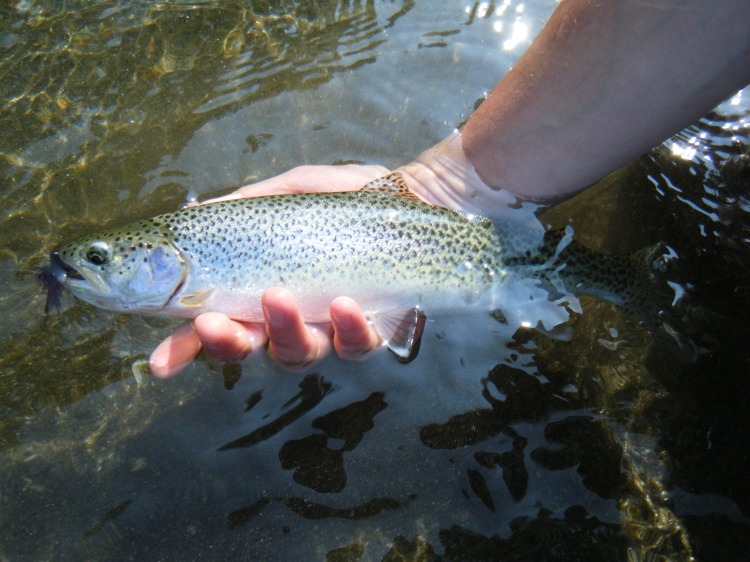Big trout are opportunistic throughout the year and like to eat larger prey such as little trout or baitfish, crayfish or whatever other terrestrial happens their way. They also attack large streamers and other attractors like spoons and spinners with abandon. Enter what is the best of both worlds, the intruder. Oftentimes if you swing intruders for summer and winter steelhead you will periodically catch nice trout. Most people shrug this off because steelheading is as singular as a crack habit but a scaled down or even regular sized intruder can also work quite well when specifically targeting larger trout.
A nice sea run on a egg sucking intruder
A nice cowichan brown on a slowly swung trout intruder
An intruder is a style of fly rather than a distinct pattern, designed for swinging and as such there are no rules about their styles, colours or materials, think of it like a wooly bugger, which has many iterations, not one. Designed initially to target the more aggressive fish at the cost of numbers, they are tied on a shank (or tube, hairpin, etc.) with a trailer hook, and feature a strong collar at the front and back to brace and flare a longer flowing hackle especially under current pressure, creating a large profile from minimal materials with minimal wind resistance and weight. The materials you use, the weight, the rigging of the trailer hook whether with tubing or some kind of wire or braid, or even a fly tied entirely on wire is limited by your imagination and not other people’s definitions. I prefer small brass eyes so my intruders aren’t actually very heavy, I find that they fish (hover broadside throughout the swing) much better than the tungsten or lead eyed versions many people use. But then again you don’t need skagits, tungsten or T- 14 either.
Rainbows, cutts, browns, and bulls all fall in the face of seductive ostrich
Some think of these “flies” as lures and not flies at all; however, I personally am not concerned with debating pointless ephemera while the resource is facing so many threats, fishers fighting with each other will only hasten the demise of the fish we all hold so dear.
Another cutthroat with a mouthful of intruder
Needless to say a switch or spey rod is the easiest way of casting and swinging these larger flies, but due to their design of maximum appearance with little actual bulk if you scale them down they fish well on a single hand rod too. I usually use my TCX 6119 or my Beulah 4/5 10’6 switch when fishing these flies, but can and do fish them on my 6 wt Mystic singlehand rod too. Like all streamer fishing, swinging, dead drifting into the swing, stripping cross, up or down stream all apply as tactics and work well, and though not used very much they will also work at the beach for sea runs.
It is easily asked, why bother using a time consuming fly like the intruder, as opposed to a big streamer and that’s a fair question, given the long history of using long shanked streamer patterns. I think that the clear answer is that those big streamer hooks in my experience do a lot of damage to smaller (and sometimes even bigger trout) whereas a size 4 or 6 octopus trailer hook usually minimizes it, so long as you keep the trailer line or wire short so that the hook is within tail of the fly. I know I’ve had a lot of bad hookups (tongue or throat hooked bleeders, eye hooked etc.) on the longer streamer hooks over the years, whereas the trailer hooks are almost invariably pinned in the same place due to their design. The other answer is that a trailer hook will usually hold a fish better than a long shanked streamer hook, as it doesn’t give them as much leverage, at least in my experience. Just like many steelheaders have gone from big spey hooks to tubes or trailers to minimize damage, I never want to tongue hook another big cutthroat in my life, it’s a move for the fish dig it?

















